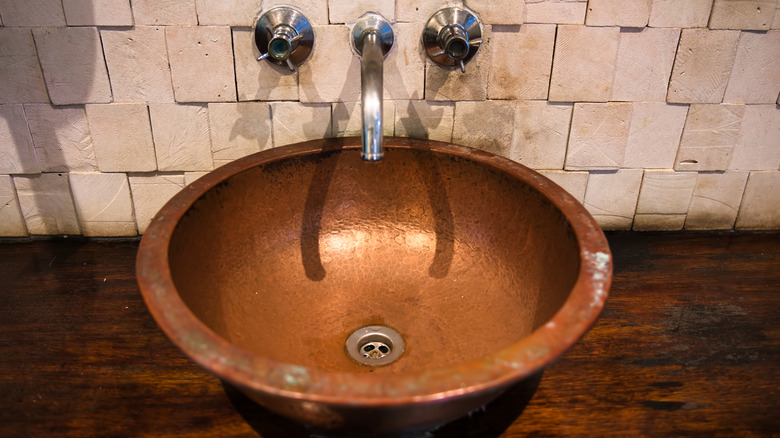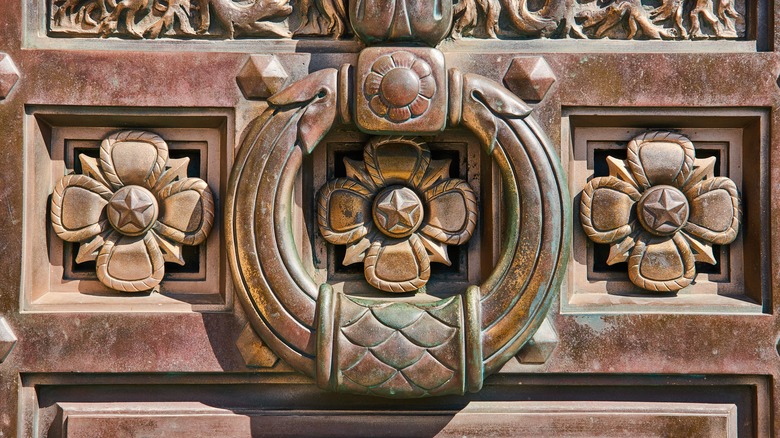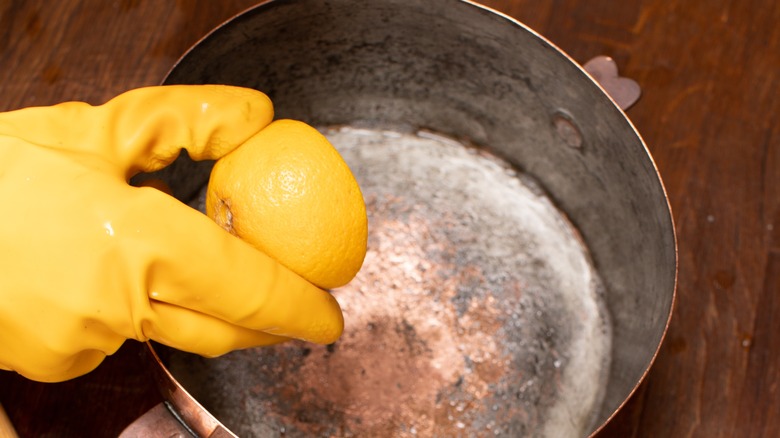The Copper In Your Home Is Not Rusting - Here's What's Actually Happening
Copper's unique color makes it a popular choice for creative kitchen designs, bath faucets, and more. But that color doesn't stay the same forever. Any copper items you own will likely look a bit different after a while, similar to an old penny — but don't be alarmed. Copper's natural color changes have nothing to do with rust, but rather are due to a different chemical reaction that creates a layer of patina over the metal.
Copper can't rust because it doesn't contain iron, the metal that reacts with air to create rust. However, copper reacts with the air too, in a way that is very different from rusting. When copper reacts with sulfuric compounds in the air, it develops a patina, darkening the copper and eventually turning it green. The Statue of Liberty's iconic color is one example of this process.
The dynamic color changes of copper, often called a "living finish," are a prized feature of copper decor. Some people even patinate copper on purpose — for example, by using hydrogen peroxide to age hardware. Here's why you may want to let the patina stay as is, and how to maintain or remove it.
Pros and cons of patina
Copper can start to develop a patina and darken after around four months. Your copper will likely never turn the bright green of the Statue of Liberty, which takes decades of weather exposure. But the copper will continue to darken over time, and some spots may get darker than others. Patina develops more quickly if the copper is exposed to a lot of heat, humidity, or saltwater.
While rust degrades metal, patina is protective. Similar to the tarnishing on sterling silver flatware, a layer of patina acts as a barrier to prevent the metal underneath from damage. Patina is part of why copper is such a durable and long-lasting metal, often used for roofs and railings. Patina won't flake away like rust, though it can be removed with certain products.
The main con of patina is that some people aren't a fan of the look, and the specific color changes are largely out of your control. Since patina finishes are one-of-a-kind, it can be hard to match new items with the aged copper you already own. However, there are ways to prevent further patination or remove it entirely if you prefer.
How to remove or preserve patina
If you're happy with the look of the patina, you can continue caring for your copper items as usual. To clean sinks and faucets, rinse with warm water, mild soap, and a soft cloth or sponge. Windex works to wipe down tabletops, door handles, and other items. Avoid abrasive cleaning products such as metal scouring pads, which can easily scratch copper. Also steer away from acidic and harsh cleaning products like bleach, lemon juice, or vinegar. These may cut through the patina, leaving bright naked spots. The same is true for acidic foods like ketchup or cosmetics such as toothpaste; avoid leaving these in copper sinks.
If you'd prefer to get rid of the patina, you can lean into those acidic products. Try buffing with lemon juice and baking soda or salt and vinegar. Just keep in mind that you'll need to add a protective coating over the copper if you want to prevent a new patina from forming. A coating of wax will keep the copper from reacting to the air and darkening. This can also be applied over a patina to freeze the color at its current stage.


